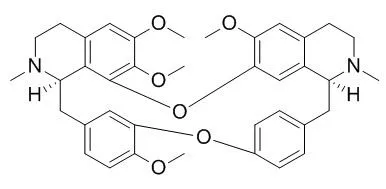1R, 1'S-Isotetrandrine, a naturally occurring plant alkaloid found in Mahonia of Berberidaceae, possesses anti-inflammatory, antibacterial, and antiviral properties, but the antioxidative activity and mechanism action remain unclear.
METHODS AND RESULTS:
In this study, we demonstrated the antioxidative effect and mechanism of 1R, 1'S-Isotetrandrine against tert-butyl hydroperoxide-induced oxidative damage in HepG2 cells. We found that 1R, 1'S-Isotetrandrine suppressed cytotoxicity, reactive oxygen species generation, and glutathione depletion. Additionally, our study confirmed that 1R, 1'S-Isotetrandrine significantly increased the antioxidant enzyme heme oxygenase-1 expression and nuclear translocation of factor-erythroid 2 p45-related factor 2 (Nrf2). Specifically, the nuclear translocation of Nrf2 induced by 1R, 1'S-Isotetrandrine was associated with Nrf2 negative regulatory protein Keap1 inactivation and phosphorylation of both extracellular signal-regulated protein kinase and c-Jun NH2-terminal kinase. Preincubation with thiol-reducing agents reduced 1R, 1'S-Isotetrandrine-induced heme oxygenase-1 expression, and treatment with either extracellular signal-regulated protein kinase or c-Jun NH2-terminal kinase inhibitors attenuated the levels of 1R, 1'S-Isotetrandrine-induced Nrf2 activation and heme oxygenase-1 expression. Furthermore, the cytoprotective effect of 1R, 1'S-Isotetrandrine was abolished by heme oxygenase-1, extracellular signal-regulated protein kinase, and c-Jun NH2-terminal kinase inhibitors.
CONCLUSIONS:
These results indicated that the 1R, 1'S-Isotetrandrine ameliorated tert-butyl hydroperoxide-induced oxidative damage through upregulation of heme oxygenase-1 expression by the dissociation of Nrf2 from Nrf2-Keap1 complex via extracellular signal-regulated protein kinase and c-Jun NH2-terminal kinase activation and Keap1 inactivation. |






 Cell. 2018 Jan 11;172(1-2):249-261.e12. doi: 10.1016/j.cell.2017.12.019.IF=36.216(2019)
Cell. 2018 Jan 11;172(1-2):249-261.e12. doi: 10.1016/j.cell.2017.12.019.IF=36.216(2019) Cell Metab. 2020 Mar 3;31(3):534-548.e5. doi: 10.1016/j.cmet.2020.01.002.IF=22.415(2019)
Cell Metab. 2020 Mar 3;31(3):534-548.e5. doi: 10.1016/j.cmet.2020.01.002.IF=22.415(2019) Mol Cell. 2017 Nov 16;68(4):673-685.e6. doi: 10.1016/j.molcel.2017.10.022.IF=14.548(2019)
Mol Cell. 2017 Nov 16;68(4):673-685.e6. doi: 10.1016/j.molcel.2017.10.022.IF=14.548(2019)